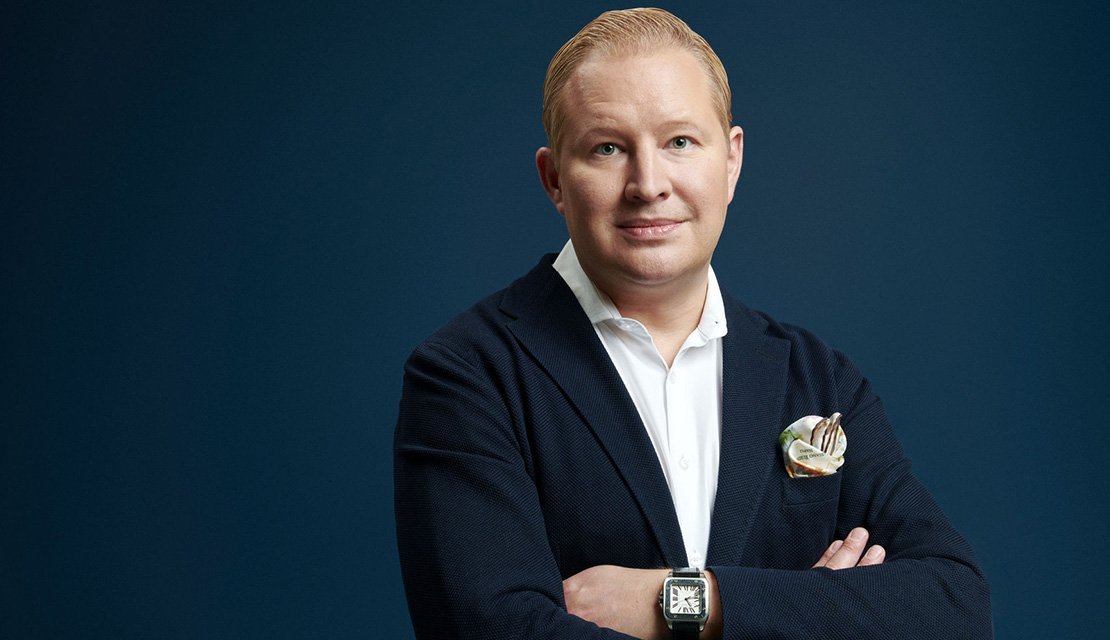Leadership development is of crucial importance in creating competitive business advantage. Studies show that it improves financial performance, helps attract and retain talent, drives strategy execution, and increases success in navigating change.
That’s why leadership development shouldn’t be seen as a separate endeavor but rather as part of overall business development. Put differently, leadership development and business development are two sides of the same coin.
All too often, it’s the HR projects that are the first to fall victim to cost-cutting measures."
Not all organizations have caught up with this view, however. As we know, the resources in both public and private organizations tend to fluctuate over the years, and all too often, it’s the HR projects that are the first to fall victim to cost-cutting measures. This causes the organization to lose its rhythm, which in turn results in it losing the big picture, that is, the overall view of its processes. When a new upturn eventually looms on the horizon and the organization begins to address the maintenance backlog accrued during the cost-cutting period, it must start from scratch as earlier HR projects have been put on hold or phased out altogether.
Smart organizations avoid this turn of events by formulating an overarching trajectory for their leadership development objectives and activities. For this to succeed, they link leadership development to business development.
Leadership development programs offer external inputs that function as stimuli and raw material. Actual growth as a leader, however, doesn’t take place in the classroom, it happens when you apply your new skills and the concepts you’ve learned to your everyday work. It’s therefore in the interests of both the organization and the individual that leadership development and business development go hand in hand. Only then will you be able to conduct true experiments, implement the experience and insight you’ve acquired, and close the knowing-doing gap. It also enables you to validate what you’ve learned and see how it works in your own context.
A smorgasbord of tools and concepts
Leadership development programs typically offer a buffet-style experience – not akin to a staff canteen but rather something you might see onboard a high-end Caribbean cruise ship. These programs dish out a broad spectrum of coaches and facilitators with many different tools and concepts on offer. In fact, the selection is such that it may lead to overeating. The participants end up with huge piles of literature and other material but lack the opportunity to apply their learning to their work.
The buffet-style approach may often overwhelm, prompting you to taste a bit of everything. This is a mistake."
The buffet-style approach may often overwhelm, prompting you to taste a bit of everything. This is a mistake. The goal is not for every participant to adopt every tool and concept on offer. On the contrary, a high-quality leadership development program – like a high-quality buffet – caters to many different tastes and customs: one customer wants bread, while another never ever eats carbs. At Aalto EE, we strive to integrate a live business case into each program so that the participants can test their newly acquired skills and knowledge and see what actually works for them and what doesn’t.
When we ask program participants at the beginning of a new session about the skills and insights they’ve adopted from the previous module, a handful of things – those that suited everyone’s tastes – make up about 60 to 70% of the answers. The rest, on the other hand, represent a diverse range of options that just happened to fit perfectly to individual participants’ current needs.
Leadership development as a voyage of discovery
Leadership development programs are increasingly linked to organizations’ long-term dreams and visions. In the best-case scenario, the strategy, too, is still in the making and the strategy dialogue takes place, in part, on the leadership development program platform. This way, the program provides an opportunity to validate selected hypotheses on the go.
In strategy work, it’s vital first to decide what we choose to believe as ‘truth.’ All industries and businesses have become more challenging: we may, for example, find competition in unexpected places or notice our competitors innovating new revenue and business models. Increasingly often, we no longer know who to compare ourselves to and therefore need to broaden our perspective. This diversity demands that we utilize crowdsourcing and collective intelligence, but it must be well organized.
The smartest organizations have figured out that leadership development programs provide an excellent platform for validating and testing ideas. They view these programs as voyages of discovery to new, unchartered territories or as an opportunity to test hypotheses and validate assumptions.
Outside support for strategy implementation
If the organization has already formed a strategy but not yet implemented it, a leadership development program can provide outside support and guidance or serve as a platform, for example, for launching key projects. The program helps to ensure that the projects don’t get buried under competing priorities: they have a structure, a timetable, a support system, and control points.
The program helps to ensure that the projects don’t get buried under competing priorities: they have a structure, a timetable, a support system, and control points."
The challenge organizations often face is that people get excited about new ambitious strategies and visions, but quickly start asking what's going to happen next. The management must rapidly provide evidence that the vision will indeed lead to action and that the management is serious about implementing the vision, not just trying to do what’s trendy. When used wisely, a leadership development program may serve as a visible symbol and prove that things are actually happening. The entire organization must see that plans are being realized and changes made.
The timeline is important. It’s vital to get moving in a matter of weeks and achieve at least some concrete milestones within a few months. It may be as simple as announcing that a new task force has been launched; attaining the final outcomes will, of course, take longer. This is another thing that leadership development programs can help with.
Concrete goals provide focus
In my experience, leadership development programs are not only a great way to get people involved and feeling included but also to channel the organization’s energies in the right direction. This only works, however, if the program is directly linked to the organization’s ambitions. The more concrete objectives you can present the better.
The most effective goals and dreams are always measurable because it helps identify exactly what must happen for you to achieve the desired results. As an example, I’ve recently worked with two growth projects within the consumer goods sector that both had a goal of reaching The Next Hundred Million. This is a concrete objective for measuring progress and provides focus for action.
A concrete objective for measuring progress and provides focus for action."
Another real-life example comes from a large healthcare organization that needed help with packaging its ideas and innovations into a format that fit its own offering while also meeting the customers’ and the market’s needs and expectations. We built them an Idea to Concept program and started by crowdsourcing a huge number of ideas. Next, we picked the top six of those ideas and used them as reference points throughout the program. We also tracked how the ideas progressed and compared this to the organization’s traditional way of doing things. The difference was significant.
Exceptional leadership skills impact the bottom line
Leadership development is proven to help organizations achieve their business development goals. It also gives backing to the entire management team responsible for implementing the organization’s strategy.
Research carried out by McKinsey & Company and Egon Zehnder in 2011 shows that while talent is always important, only exceptional talent makes a real difference. According to the report, there was a high correlation between executives with “excellent” capabilities and the organization’s financial performance, while merely “good” performances showed no correlation.
In appraising leadership development, we should move from measuring intellectual and cognitive skills to evaluating the concrete actions taken and the results achieved. The real impact of leadership development should manifest itself in improved business development performance.
Dr. Pekka Mattila is the Group Managing Director of Aalto University Executive Education and serves as a Professor of Practice at the Aalto University School of Business. He works frequently with European, Asian, African, and North American executive audiences on themes ranging from strategic management and agility, strategy co-creation, business model innovation, and executive leadership to top team dynamics, change management, organizational culture, and strategic marketing.
Aalto EE offers thought provoking executive education and leadership development services for individuals and organizations globally. It is our mission to build a better world through better leadership. Learn more.





















